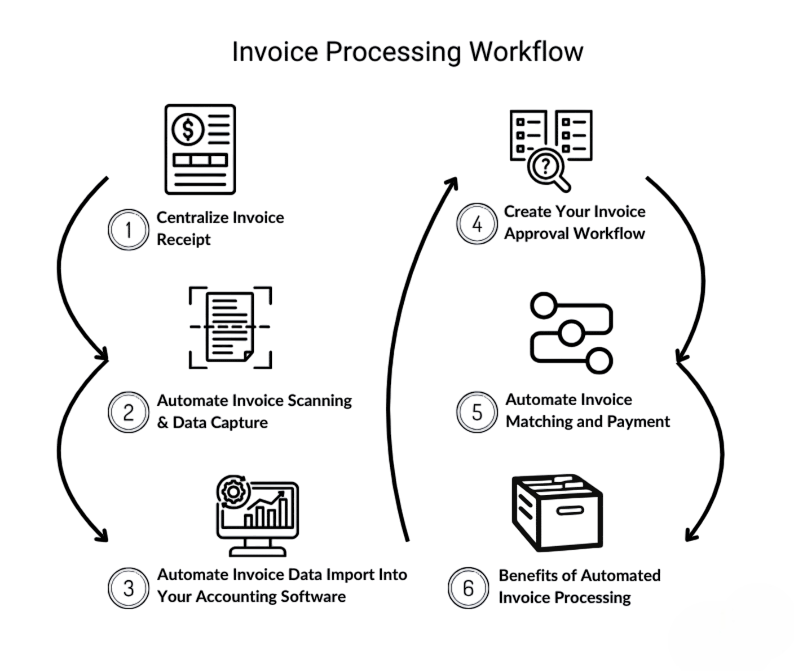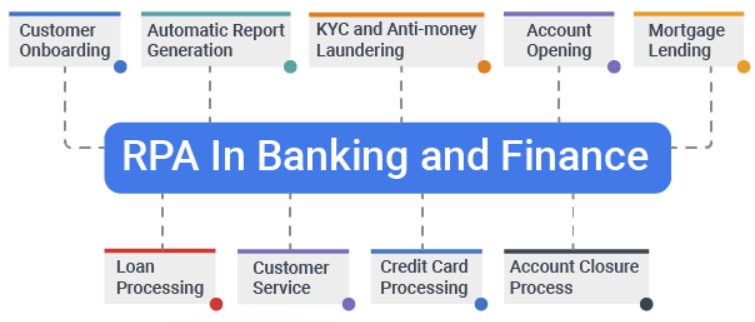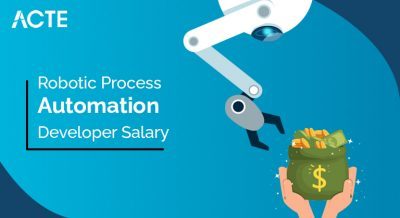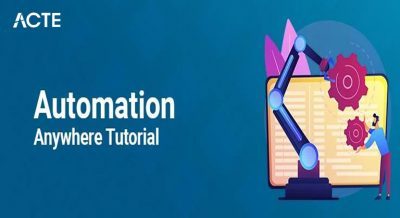
- Introduction to RPA Projects
- Criteria for Selecting RPA Projects
- Invoice Processing Automation
- HR Onboarding Automation
- Customer Support Chatbots
- Automating Data Entry Tasks
- RPA for Financial Reporting
- Healthcare Appointment Scheduling
- Best Practices for RPA Implementation
- Conclusion
Introduction to RPA Projects
Robotic Process Automation (RPA) is revolutionizing industries by automating repetitive tasks, improving operational efficiency, and reducing human error. RPA projects involve using software bots to automate rule-based processes across various business functions. SoftwareTesting Training bots can emulate human actions like clicking, typing, and reading data from screens, enabling businesses to achieve higher productivity and scalability. The success of RPA depends on the careful selection of processes, the right technological tools, and a structured RPA Implementation strategy. By identifying appropriate candidates for automation, businesses can reap substantial benefits, including cost savings, faster processing times, and enhanced employee satisfaction.
Criteria for Selecting RPA Projects
Choosing the right automation processes is crucial to any RPA initiative’s success. Ideal candidates for RPA projects generally share characteristics: high-volume transactions, repetitive tasks, rule-based operations, low exception rates, and stable, well-defined processes. Processes that require minimal Page Object Model in Selenium judgment and have structured inputs are perfect for automation. Additionally, processes that involve legacy systems without APIs or standardized integrations also make good candidates. Organizations should perform a detailed process assessment to evaluate complexity, potential ROI, and technical feasibility. Prioritizing high-impact, low-complexity processes initially helps build confidence and establish a strong foundation for expanding automation efforts.
Master Automation Testing skills by enrolling in this Automation Testing Online Course today.
Invoice Processing Automation
Invoice processing is one of the most common applications of RPA in finance and accounting departments. Traditionally, invoice management is labor-intensive, involving data extraction, RPA Developer Salary, matching purchase orders, and approving payments. RPA bots can automate the invoice-to-payment cycle, read invoices via Optical Character Recognition (OCR), extract relevant data, verify accuracy, and even post entries into ERP systems. Automation accelerates the processing time, reduces errors, improves vendor relationships, and ensures regulatory compliance. Implementing RPA in invoice processing leads to faster turnaround times, real-time tracking, and significant cost reductions.

HR Onboarding Automation
- Employee onboarding is a complex and sensitive process involving multiple systems and departments. RPA can streamline onboarding by automating tasks such as document verification, Automating Data Entry into HR systems, email communication, system access provisioning, and compliance checks.
- Bots ensure that new hires have a seamless experience from accepting an offer until their first day at work. HR teams benefit by freeing their time for more strategic activities like employee engagement and talent development.
- RPA shortens the HR Onboarding Alert Popups Handle Selenium WebDriver and ensures consistent experiences for all new employees, reducing errors and boosting satisfaction.
- Web scraping is the process of extracting data from websites, and RPA can make it more efficient by automating the retrieval of structured or semi-structured information.
- Businesses use RPA for competitive analysis, price comparison, market research, and lead generation. Instead of manually copying and pasting data from web pages, RPA bots can navigate websites, search for specific information, and export data into usable formats like Excel or databases.
- Moreover, bots can be scheduled to scrape data regularly, ensuring businesses always have the latest information. Web scraping using RPA saves time, reduces manual labor, and enables faster decision-making.
- Data entry is one of any organization’s most tedious and error-prone tasks. RPA bots excel at copying data between systems, populating fields in applications, and verifying the accuracy of inputs.
- For instance, data entry plays a crucial role in customer HR Onboarding and claims processing in industries like banking, insurance, and healthcare. By automating data entry, companies can significantly reduce processing times, improve data accuracy, and free up employees for more meaningful work.
- Furthermore, automated data entry ensures compliance with data governance policies and minimizes the risk of regulatory penalties.Managing inventory efficiently is critical for retail, manufacturing, and logistics companies.
- RPA bots can automate inventory tracking, stock level updates, order placement, and report generation. Bots can monitor stock in real Blue Prism Certification, send alerts when reordering is necessary, and even initiate purchase orders automatically based on predefined thresholds.
- Integration with ERP and warehouse management systems ensures data accuracy and seamless operations. Inventory management automation reduces stockouts, prevents overstocking, optimizes warehouse utilization, and enhances customer satisfaction by providing product availability.
- Healthcare providers face immense pressure to optimize patient scheduling and reduce no-shows. RPA can automate appointment booking by interacting with patients via online portals, emails, or SMS, verifying insurance details, and updating hospital management systems.
- Bots can reschedule appointments based on doctor availability, send reminders to patients, and ensure the optimal utilization of healthcare resources. Automation in healthcare scheduling leads to improved patient experiences, better resource management, and increased operational efficiency for hospitals and clinics.
- Moreover, Selenium Select Class helps administrative staff focus on patient care rather than routine administrative tasks.While RPA offers significant benefits, RPA Implementation is not without challenges.
- One major hurdle is selecting the right processes for automation; not all methods are suitable for RPA. Inadequate process documentation, high variability, and frequent changes can undermine RPA success.
- Another challenge is scaling RPA beyond pilot projects, requiring strong governance, change management, and a scalable technology infrastructure. Resistance to change from employees, concerns about job displacement, and the need for new skill sets can impede RPA adoption.
- Technical challenges include bot maintenance, security risks, compliance issues, and integration with legacy systems. Successful RPA projects address these challenges through careful planning, stakeholder engagement, and continuous monitoring.
Take your automation testing skills to the next level with this Automation Testing Online Course .
Customer Support Chatbots
Customer service departments increasingly leverage RPA and AI-powered chatbots to handle common customer queries. While RPA is primarily rules-based, when integrated with AI, it enables bots to understand and respond to various customer requests, such as checking order status, resetting passwords, or booking Software Testing Training. Chatbots can automatically collect user information, escalate complex issues to human agents, and update CRM systems. RPA bots operating behind the scenes can ensure smooth communication between different systems, providing the chatbot with quick and accurate responses. Automating customer support improves response times, enhances customer satisfaction, and reduces operational costs.
Automating Data Entry Tasks
Want to lead in Automation Testing? Enroll in ACTE’s Automation Testing Master Program Training Course and start your journey today!
RPA for Financial Reporting
Financial reporting is a high-stakes activity where accuracy and timeliness are paramount. Preparing financial reports often requires aggregating data from multiple systems, reconciling accounts, and ensuring compliance with regulatory standards. RPA bots can gather data from various sources, perform calculations, and generate standard financial statements like balance sheets, income Waits in Selenium, and cash flow reports. Bots can also validate data consistency, highlight anomalies, and create audit trails for transparency. Automating financial reporting reduces the risk of human errors, accelerates closing cycles, and ensures organizations meet reporting deadlines without compromising accuracy.

Healthcare Appointment Scheduling
Preparing for a job interview? Explore our blog on Automation Testing Interview Questions and Answers
Best Practices for RPA Implementation
To maximize the benefits of RPA, organizations should follow best practices throughout the project lifecycle. Start small with a proof of concept focusing on simple, high-impact processes. Define clear objectives, success criteria, and KPIs to measure progress. Invest in process discovery and documentation to ensure a thorough understanding of workflows. Collaborate closely with Selenium WebDriver and business teams to align RPA initiatives with overall digital transformation goals. Choose the right RPA tool based on scalability, ease of integration, security features, and vendor support. Prioritize bot security and compliance from the beginning to avoid vulnerabilities. Establish a Center of Excellence (CoE) to drive standardization, governance, and continuous improvement across RPA initiatives. Train employees on RPA concepts and involve them in bot development to encourage adoption and reduce resistance. Lastly, continuously monitor bot performance, update processes as needed, and leverage analytics to identify further automation opportunities.
Conclusion
In conclusion, RPA is a powerful technology that can significantly enhance business operations across industries. The possibilities are vast, from automating invoice processing and HR onboarding to revolutionizing customer support and financial reporting. However, achieving success with RPA requires a strategic approach selecting the right projects, overcoming challenges, and adhering to best practices. As businesses increasingly embrace automation, SoftwareTesting Training will continue to play a central role in driving efficiency, innovation, and competitive advantage.





